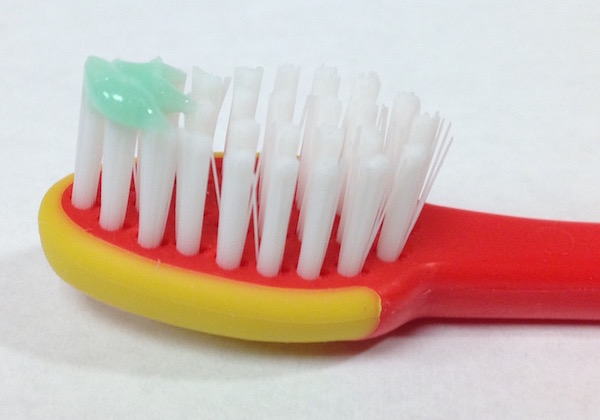 Taking care of babies’ oral health is important. Care should start before the baby’s first tooth comes in. Healthy primary (baby) teeth help children chew nutritious foods and speak clearly. Primary teeth also make space for permanent (adult) teeth. A baby’s first tooth usually comes in at around age 6 to 10 months. As soon as the first tooth comes into the mouth, a baby can develop tooth decay.
Taking care of babies’ oral health is important. Care should start before the baby’s first tooth comes in. Healthy primary (baby) teeth help children chew nutritious foods and speak clearly. Primary teeth also make space for permanent (adult) teeth. A baby’s first tooth usually comes in at around age 6 to 10 months. As soon as the first tooth comes into the mouth, a baby can develop tooth decay.
This Brush Up on Oral Health tip sheet focuses on oral health for babies (from birth to age 1) and what Head Start staff can do to help promote good oral health for babies.
Care of Babies’ Mouths
Head Start staff play an important role in the care of babies’ mouths. In addition to cleaning babies’ mouths after feedings, staff can educate pregnant women and parents on the best ways to care for their baby’s mouth. Here is some key advice staff can share:
- Clean the baby’s gums even before the first tooth appears in the mouth. Use a clean, damp washcloth to wipe any remaining milk off the gums. Doing this at least twice a day, especially after night feeding, will help the baby get used to having his or her mouth cleaned.
- After the baby’s first tooth comes in, use an infant toothbrush with soft bristles and a small head. Put a rice-size amount of fluoride toothpaste on the toothbrush, and brush the fronts and backs of the baby’s teeth. Lift the baby’s lip to brush at the gum line of the front teeth. The best time to brush teeth is in the morning and at bedtime.
Preventing tooth decay and other oral health problems takes more than just brushing a baby’s teeth with fluoride toothpaste every day. Here are other ways to keep a baby’s mouth healthy and to keep babies comfortable:
- Do not put a baby to sleep with a bottle filled with breastmilk, formula, juice, or other drinks with sugar. These practices should be avoided because the sugar in the liquid stays on the baby’s teeth, which can lead to tooth decay.
- Parents should not use their mouths to test the temperature of milk in bottles. Parents and other caregivers can pass the bacteria that cause tooth decay to their babies through saliva.
- Teething can make babies’ gums sore. When babies are teething, they can be cranky, drool more than usual, and chew on their fingers or objects. To help a baby be more comfortable while teething, give him or her a cool teething ring, cool spoon, or a cold, wet washcloth. For more information about teething, see Brush Up on Oral Health: Easing Baby’s Teething Pain.
- Many babies suck their thumbs, fingers, hands, a pacifier, or another object such as a blanket or toy. Sucking is a normal baby reflex. It helps babies feel secure and happy. Most children stop sucking between ages 2 and 4.
- If parents choose to have their baby suck a pacifier, Head Start staff should make these recommendations:
- Clean the baby’s pacifier with soap and water.
- Replace the pacifier when it becomes worn or broken.
- Do not dip a pacifier in sweetened foods or liquids (for example, sugar, honey, or syrup) because this can cause tooth decay.
- Never clean a pacifier with saliva before giving it to the baby because the bacteria that can cause tooth decay can be passed to the baby.
- Never attach a pacifier to a ribbon or string around the baby’s neck because it might strangle the baby.
The First Dental Visit
Babies should have their first dental visit by age 1. The dentist will check to make sure everything is normal. The dentist will also look for signs of tooth decay or other problems that may affect the baby’s oral health. In addition, the dentist will answer parents’ questions about their baby’s oral health. Going to the dentist at a young age helps children become accustomed to visiting the dental office and receiving care. For more information about Age 1 dental visits, see Brush Up on Oral Health: Promoting the Age 1 Dental Visit.
Read more:
Resource Type: Article
National Centers: Health, Behavioral Health, and Safety
Audience: Teachers and Caregivers
Series: Brush Up on Oral Health (BUOH)
Last Updated: February 3, 2025
